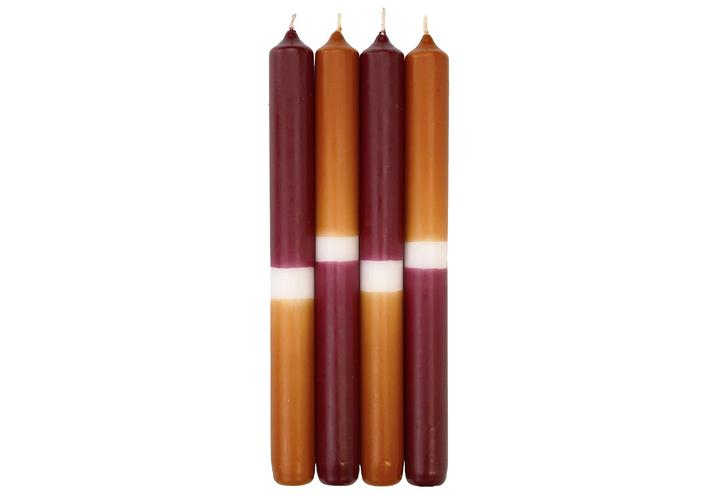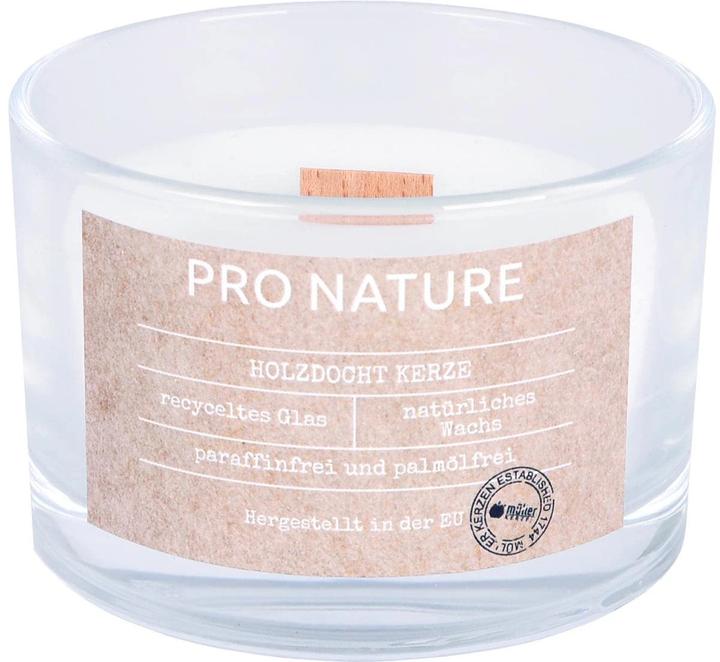

Can scented candles harm your health? What you need to know
From relaxed evenings to festive occasions, candles are a popular way to add ambience. But not all candles are harmless. Read on to find out how to keep the risk as low as possible.
Whether you’re curled up on the sofa in winter or relaxing outside together on a warm summer’s evening – a (scented) candle gives the vibe that certain something. But you don’t want it to harm your health. So, should you avoid burning them? Or is there no health risk anyway?
Basically, candles always undergo a combustion process that releases carbon dioxide, fine dust and soot. So, every burning candle pollutes the air a little. The combustion process also releases volatile organic compounds (VOCs), such as alkanes, alkenes, ketones and toluene. Experts consider the toxic long-term effects of many VOCs to be potentially carcinogenic, mutagenic and reprotoxic. Candles have different base and wick materials, as well as varying additives such as dyes or fragrances. And with the right handling, you can reduce the pollutants they release.
Paraffin, stearin or beeswax: which is best for your health?
First of all, let’s look at basic candles ingredients. Paraffin is the most commonly used base in candle production. The byproduct of petroleum refining is cheap and available in large quantities, which makes it attractive for manufacturers. When a paraffin candle burns, one of the things it releases is benzene, which is classified by the World Health Organization as «carcinogenic to humans.»
Candles can also be made from stearin, which is extracted from palm or coconut oil. It’s more expensive than paraffin and its extraction is ecologically problematic. However, these candles burn longer, don’t drip and release less soot and fine dust.
Beeswax candles are the most expensive option, but they also burn for longer. According to the German Cancer Research Center, they’re a less polluted and polluting alternative to candles made from other types of wax (article in German). However, because they’re made from wax in bees’ honeycombs, they’re not as widely available as other types of candles.
What to look for in a candle wick
Different materials are also used for candle wicks. It’s important to avoid any that contain metal. Wicks containing lead are particularly dangerous, although they’re already banned in Switzerland and Germany. Wicks with zinc or copper cores aren’t generally outlawed, but they can also release harmful substances when burned, so you should avoid them too. Alternatives are wicks made of cotton, paper and wood.
Are scented candles more harmful than other candles?
Apart from the base material and wick, scented candles contain other potentially harmful ingredients. Unfortunately, the substances used to create the scent aren’t all clearly labelled. Basically, there are countless natural and synthetic fragrances that can be used in a candle to make it smell good. As many of these can also cause allergies, the North Rhine-Westphalia Consumer Advice Centre advises against scented candles entirely (article in German). A study by the Fraunhofer Institute also found that scented candles release more polycyclic aromatic hydrocarbons (so-called PAHs) and fine dust than unscented candles.
Low-emission candles: quality seal for guidance
As you can see, it’s far from easy to assess the pollutant content of (scented) candles, as they can contain a number of harmful ingredients. Although the labelling on candles is often inadequate, quality seals such as the RAL candle quality mark offer you a guide. They set strict requirements for wax, wicks, candle colours and varnishes to ensure candles burn with as few pollutants as possible. What’s more, candles with this quality mark must burn evenly without dripping and must adhere to the specified burning time.
Here’s an overview of the members of the RAL quality mark.
Our shop stocks candles with the RAL quality mark from Balthasar, Müller Kerzen, Wiedemann, Wenzel, Steinhart and Spaas.
And I also have some good news. After weighing everything up, the German Cancer Research Center has concluded there’s no evidence of candles causing cancer and that, if they’re handled correctly, any potential risk can be largely ruled out.
Tips to reduce air pollution:
- Avoid drafts, otherwise the flame will produce more soot.
- It’s best to use candles outdoors or in well-ventilated rooms to keep the concentration of pollutants as low as possible
- Avoid coloured, decorated or glitter candles – they can contain other harmful substances
- Go for candles made of beeswax or stearin rather than paraffin
- Avoid candles with metal in their wick
- Pay attention to the length of the wick – if it’s too long, you’ll get an unstable, smoky flame
Science editor and biologist. I love animals and am fascinated by plants, their abilities and everything you can do with them. That's why my favourite place is always the outdoors - somewhere in nature, preferably in my wild garden.
Practical solutions for everyday problems with technology, household hacks and much more.
Show all




